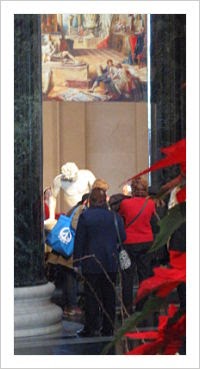 Uummmm, not all the time/photo, airlinesdestination.com
Uummmm, not all the time/photo, airlinesdestination.com
I chose an early flight out of Baltimore so I could get to the beach earlier and have a longer day on the shore.
Alas. It was not to be.
Just try to walk, run, or play in the sand in high heels; it ain't happenin'. But that's all I had. My bags didn't make the flight.
Thank you, Southwest Airlines.
From Baltimore to Charleston is only 95 non-stop minutes in the air (okay, 100 if you don't know which way the wind blows) so you'd think if you thought that losing bags would not happen since no turnarounds, transfers, layovers, pushups, or loose peanuts are involved, but, somehow, some way, bags belonging to about 25 of us got left behind. On a cart somewhere in Baltimore, the Southwest agent in Charleston said.
They left a cart somewhere in Baltimore
Beside the plane, they call to me.
To be where other big bags fly,
halfway to the stars
The morning rain may wet the air
They don't care
My bags wait there for me in Baltimore
Nearby the blue and windy sea
When I call you bad names, O Baltimore
You've got my bags in absentee
The plane was not crowded. It was a rare day in Skyland. Empty middle seats filled the rows. None of us found languishing later at Charleston's baggage claim were "late check-ins." No explanation.
Something's awry in Baltimore.
The last trip I made on Southwest before this one was at Christmas when I found, at my destination, wet contents in my bag caused by someone leaving my luggage uncovered on the tarmac in Baltimore where it was pouring the rain. I filed a complaint and got a $50 voucher, enough to buy emergency supplies for the next flight which would be this one.
I tell you, something's awry in Baltimore.
What made it worse was Southwest's failure to guarantee the bags would be placed on the next available flight which was six hours later. At the baggage claim center (888-202-1024) two agents told me my bags were lost, and Southwest could not locate them. I made a few phone calls to Charleston (843-789-5442), Southwest's "customer service" (214-932-0333 and closed on Sunday), and left a choice message or two for the Baltimore Southwest baggage claim office (410-981-1200). I can well understand why that manager would have his answering machine set on permanence since he wants to avoid taking live calls like he wants to avoid live snakes with fangs. I was.
Meanwhile, a local at a restaurant told me the same thing had happened to her aunt who had to go out and buy a whole new wardrobe for her vacay. Attention, Southwest Airlines: I ain't a one-percenter with a vacay wardrobe checking account!
Meanwhile, it dawned on me (ding, ding, ding; hold on, brain's in commotion) that... it... was... pouring....the rain....all over again in the Land of the Ravens when....we....left...... which meant....possibly.... yep, you think, damp contents again? (Answer, below.*)
Upon check-in at my hotel I griped about my stress-filled day to the clerk, and another guest had the nerve to interrupt my day without pity: "Well," she harrumphed, "we paid $85 for two bags and golf clubs on US Air."
"Look," I snarled
I see that worried look upon your face,
You've got your bags, I don't have mine.
You flew US Air, I wish I had your place
You've got your bags, I don't have mine.
"You get what you pay for," I continued
I got plenty of nothin'
And nothing's not plenty for me.
I got no shoes,
Got no rouge,
Got lots of misery
From Southwesty
Folks with plenty of baggage
Are happy folks, yes, indeed
You got your shirts
You got your pants
You don't need no delivery
From Southwesty
No wet-soaking clothes
Do you find in your bags
But it's more
And I'm sore
to miss the fun in the sun
On the shore!
The things that I prize
Like my bags in the sky
Are not free!
Say I've got plenty of nothin'
And nothing's not plenty for me.
Got no clothes
Got no shoes,
Ain't got no guarantee from Southwesty
Got my stress
Where's my dress
That's my song
Lookin' for bags the whole daylong
Ten hours later, well, looky here: I'll be doggone, here they came. I tell you, something's awry at that Baltimore Southwest baggage office, however, I may have discovered the hiding place of the manager in absentia which will have to wait until I return to O Baltimore and take a photo. (This just in: An update at the end.)
Anyway, I thought I hated Dulles. Well, I do hate Dulles. It's the pits. Those people out there haven't smiled since they got Easter baskets back in 1946. Dulles is so bad Senator Mark Warner (D-VA) has called for an official investigation and airport cleaning of why it's so bad. Thank you, Senator Warner.
Attention, Senator Barbara Mikulski (D-MD): O Baltimore airport has a few little baggage problems you might want to check out before you check out of there again.
I tell you what: It saves to fly National, at least, for now. Because for sure: Something's happening at that Baltimore airport, and it ain't no free flying bags.
* You got it!
patricialesll@gmail.com












.jpg)













